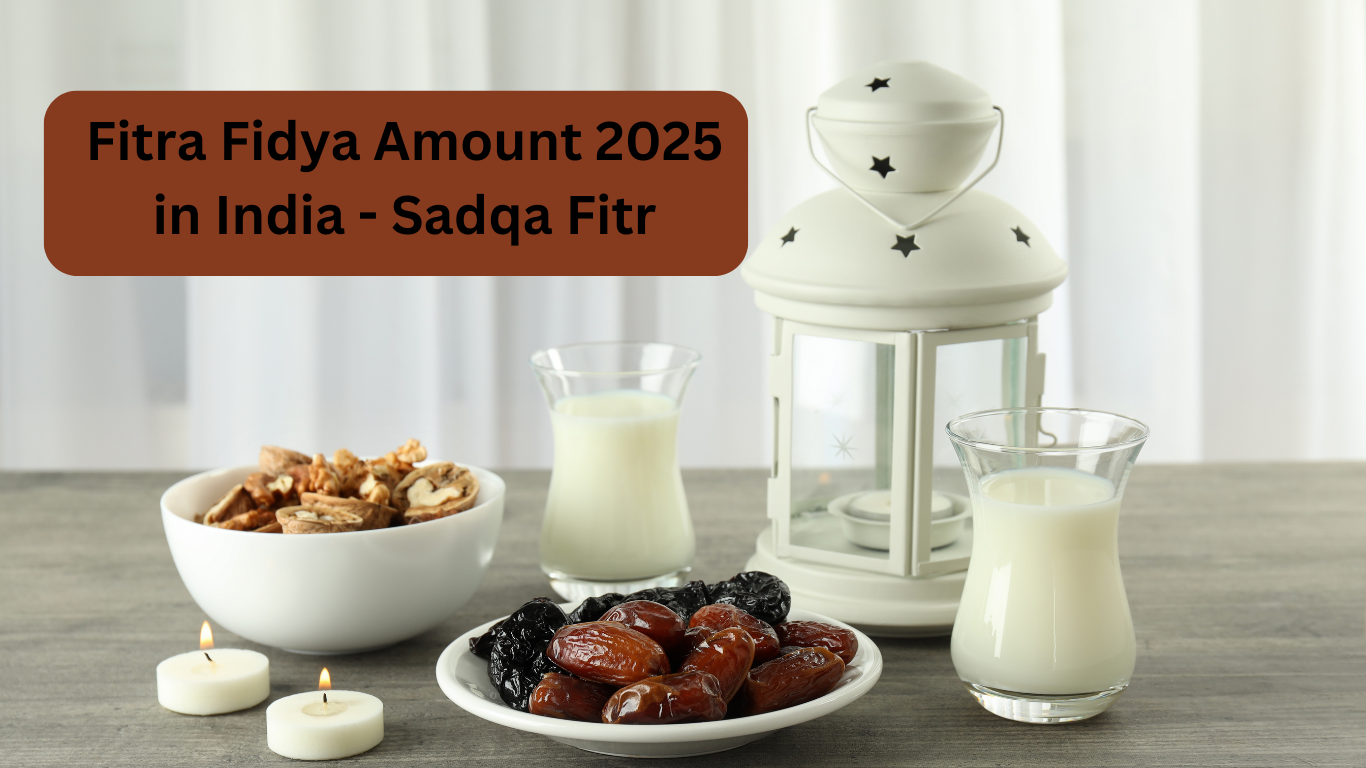Fitra, also known as Zakat al-Fitr or Sadqa e Fitr, holds significant importance for Muslims worldwide, particularly in the holy month of Ramadan. It is an obligatory act of charity that not only purifies the fasts of Ramadan but also helps the underprivileged celebrate Eid al-Fitr with dignity and joy.
If you’re looking for accurate information on the Fitra amount for 2025 in India, you’re in the right place. This article outlines the estimated amounts, the importance of Fitra, calculations, and essential guidelines to fulfill this obligation.
What is Fitra (Fitrana)?
Fitra, also referred to as Sadqa-e-Fitr or Zakat al-Fitr, is an obligatory charity that Allah (SWT) has mandated on every Muslim who has surplus wealth beyond their basic needs. Fitra is typically paid before the Eid al-Fitr prayer, ensuring that the less fortunate are able to enjoy the Eid celebrations equally.
This charitable act purifies the fasting of Ramadan, addressing any shortcomings in the fasts, and provides essential sustenance for the needy, allowing them to partake in the joy of Eid with dignity. It applies to all Muslims who qualify—be it adults or children, husbands or wives, guardians on behalf of their dependents—all must pay Fitra.
Fitra Amount 2025 in India
The Fitra amount in India is calculated using the value of staple food items such as wheat, barley, dates, and raisins. Each year, local authorities, such as the All India Muslim Personal Law Board (AIMPLB), announce the recommended amounts for Fitra after considering market prices for these foodstuffs.
Fitra rates are expected to rise slightly this year due to inflation and fluctuating market prices. Below is the approximate Fitra amount based on common food items for 2025 in India (as per current estimates):
- Wheat (Gandum): ₹75 per person
- Barley (Jau): ₹160 per person
- Dates (Khajoor): ₹500 per person
- Raisins (Kishmish): ₹1100 per person
- Ajwa Dates: ₹3150 per person
It’s essential to confirm these values closer to Eid, as local authorities will officially announce the exact amounts.
Key Tip
The minimum Fidya (compensation for missed fasts) for Ramadan 2025 is estimated to start from ₹72.
How is Fitra Calculated?
Fitra is based on the price of 2.6 kg of staple food. The Prophet Muhammad (PBUH) ordained that Fitra should align with the value of food considered basic in the region—whether it’s wheat, barley, dates, or raisins.
Here’s how you can calculate Fitra in your region in 2025:
- Determine the current market value of 2.6 kg for wheat, barley, dates, or raisins in your local market.
- Multiply the cost by the number of people in your household (including dependents).
- The total is the amount you need to pay as Fitra.
For example, if the cost of 2.6 kg of wheat is ₹75, and you are paying for three individuals, your total Fitra obligation would be ₹225.
The Importance of Sadqa-e-Fitr
Sadqa-e-Fitr is far more than just a religious obligation. Here are some key reasons why it’s important:
- Purification of the Fast: It compensates for any minor mistakes or shortcomings made during Ramadan fasting.
- Helping the Needy: It ensures that even the less privileged can celebrate Eid with happiness and dignity.
- Community Bonding: It fosters compassion and strengthens ties within the community.
“Allah’s Messenger (PBUH) enjoined Zakat al-Fitr as purification for the fasting person from indecent words or actions and as a way of giving food to the needy.” (Sunan Abu Dawood)
When Should Fitra Be Paid?
Fitra should be paid before the Eid al-Fitr prayer. The earlier it is paid during Ramadan, the better, as it allows time for the relief to reach those who need it most. Delaying it beyond the Eid prayer is not permissible and would no longer fulfill its intended purpose.
Who is Required to Pay Sadqa-e-Fitr?
Fitra is obligatory for every Muslim who possesses wealth that exceeds their essential needs. It must be paid for oneself and on behalf of dependents within the family, such as children or anyone under their care.
If you have dependents who cannot pay their Fitra, it is your responsibility to do so on their behalf.
Staying Updated on the Fitra Amount
The exact Fitra amount for 2025 has not yet been officially announced. Local Islamic organizations and scholars will issue official guidelines closer to Eid. It’s advisable to keep an eye on announcements from reliable Islamic authorities, such as the All India Muslim Personal Law Board, to ensure compliance with local rates and practices.
Understanding Sadqa e Fitr ki Miqdar 2025
Sadqa e Fitr ki Miqdar refers to the amount of Fitra that must be given in 2025. This value varies based on the chosen food item (wheat, barley, dates, raisins, etc.) and their market price. Stay informed by consulting your local masjid or Islamic center.
Takeaways and Final Thoughts
Fitra is not just a ritual—it’s an opportunity to cleanse our fasts, aid the underprivileged, and foster a sense of equality and community as we celebrate Eid-al-Fitr. By understanding the calculations, timings, and importance of Fitra, we can fulfill this obligation in a manner that aligns with Islamic teachings.
Lastly, always aim to give with an open heart. Whether you choose wheat, barley, or premium Ajwa dates, the intention behind the charity matters most.
May Allah (SWT) accept your fasts, prayers, and charities this Ramadan.
Stay informed, fulfill your obligation, and make Eid special for all.

